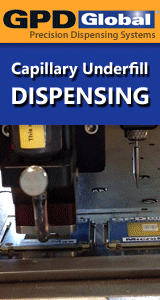Printed Circuit Board Assembly & PCB Design Forum
SMT electronics assembly manufacturing forum.
- SMTnet
- »
- Electronics Forum
- »
- Curious PCB technology
Curious PCB technology
Views: 3600
![]() Hello,
There is curious PCB technology used for one aluminu...
- Jan 23, 2020
by
Hypnotia
Hello,
There is curious PCB technology used for one aluminu...
- Jan 23, 2020
by
Hypnotia
![]()
![]()
![]() The joint material looks like some kind of conductive glue. ...
- Jan 24, 2020
by
Evtimov
The joint material looks like some kind of conductive glue. ...
- Jan 24, 2020
by
Evtimov
![]()
![]()
![]() Evtimov,
There is no solder mask at all. Material is applie...
- Jan 24, 2020
by
Hypnotia
Evtimov,
There is no solder mask at all. Material is applie...
- Jan 24, 2020
by
Hypnotia
![]()
![]()
![]() what does the PCB go into?
Is it for use in an extreme envi...
- Jan 24, 2020
by
DWL
what does the PCB go into?
Is it for use in an extreme envi...
- Jan 24, 2020
by
DWL
![]()
![]()
![]() DWL,
This is general purpose outdoor lighting product, a di...
- Jan 25, 2020
by
Hypnotia
DWL,
This is general purpose outdoor lighting product, a di...
- Jan 25, 2020
by
Hypnotia
![]()
![]()
![]() Looks like a screen printed circuit using a platinum or pall...
- Jan 27, 2020
by
charliem
Looks like a screen printed circuit using a platinum or pall...
- Jan 27, 2020
by
charliem
![]()
![]()
![]() That's a pretty pricey process, no? Wonder why someone woul...
- Jan 27, 2020
by
dontfeedphils
That's a pretty pricey process, no? Wonder why someone woul...
- Jan 27, 2020
by
dontfeedphils
![]()
![]()
![]() Solvent resistance? That's the only thing that made any sens...
- Jan 27, 2020
by
Steve Thomas
Solvent resistance? That's the only thing that made any sens...
- Jan 27, 2020
by
Steve Thomas
![]()
![]()
![]() I have to ask this because "Material is applied over ba...
- Jan 27, 2020
by
Steve Thomas
I have to ask this because "Material is applied over ba...
- Jan 27, 2020
by
Steve Thomas
![]()
![]()
![]() Steve,
I am sorry for misinforming. Indeed, there is a sort...
- Jan 28, 2020
by
Hypnotia
Steve,
I am sorry for misinforming. Indeed, there is a sort...
- Jan 28, 2020
by
Hypnotia
![]()
![]()
![]() Pavel, no worries. I assumed as much but wanted to make sure...
- Jan 29, 2020
by
Steve Thomas
Pavel, no worries. I assumed as much but wanted to make sure...
- Jan 29, 2020
by
Steve Thomas
![]()
![]()
![]() Even if it is no where near the pumps it is probably certifi...
- Jan 30, 2020
by
Stephen
Even if it is no where near the pumps it is probably certifi...
- Jan 30, 2020
by
Stephen
![]()
![]()
![]() Clever idea.
I used to work on hybrids. baking temp about 85...
- Jan 30, 2020
by
sarason
Clever idea.
I used to work on hybrids. baking temp about 85...
- Jan 30, 2020
by
sarason
![]()
![]()
![]() Sorry, I'm confused. I just purchased PCB from cplfpc.com on...
- Feb 14, 2020
by
James Hayliie
Sorry, I'm confused. I just purchased PCB from cplfpc.com on...
- Feb 14, 2020
by
James Hayliie
![]()
![]()
![]() This is conductive adhesive and sreen printing.
...
- Aug 25, 2020
by
serge_pirog
This is conductive adhesive and sreen printing.
...
- Aug 25, 2020
by
serge_pirog
![]()
- SMTnet
- »
- Electronics Forum
- »
- Curious PCB technology







